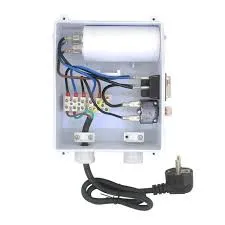Understanding Insulating Strips Their Importance and Applications
Insulating strips, also known as insulation strips or insulating barriers, play a crucial role in various industries by ensuring electrical safety and enhancing the efficiency of systems. These strips are typically made from materials that resist the flow of electric current, which is vital in preventing electrical hazards and maintaining optimal performance in electrical devices and machinery. This article explores the importance of insulating strips, their types, materials, applications, and best practices for their use.
What are Insulating Strips?
Insulating strips are narrow, elongated pieces of insulating material used to provide electrical isolation between conductive surfaces and components. They can be found in electrical circuits, power electronics, and various household appliances. The primary function of these strips is to prevent electrical short circuits, minimize leakage current, and ensure the safe operation of electrical devices.
Types of Insulating Strips
There are several types of insulating strips designed for specific applications
1. PVC Insulating Strips Polyvinyl chloride (PVC) is a common material used for insulating strips. These strips are flexible, durable, and resistant to moisture and chemicals, making them suitable for a wide range of applications, including wiring harnesses and cable sheathing.
2. Polyethylene Insulating Strips Polyethylene strips are lightweight and have good insulating properties. They are commonly used in packaging and insulation applications, providing a barrier to prevent electrical conduction.
3. Rubber Insulating Strips Rubber strips are known for their excellent elasticity and flexibility. They provide superior insulation in high-voltage applications, such as power lines and transformers, where mechanical stability under pressure is required.
4. Fiberglass Insulating Strips These strips are made from woven glass fibers coated with resin. They offer high thermal stability and resistance to fire, making them ideal for high-temperature environments.
Applications of Insulating Strips
The applications of insulating strips are vast and varied
insulating strip

- Electrical Equipment Insulating strips are commonly used in electrical panels, circuit breakers, and transformers to provide insulation between conductive components. This helps in preventing short circuits and protecting sensitive electronics.
- Automotive Industry In vehicles, insulating strips play a key role in protecting wiring and electrical components from abrasion, moisture, and extreme temperatures. They ensure the reliability of electrical systems in cars and trucks.
- Consumer Electronics Devices such as smartphones, tablets, and laptops utilize insulating strips to protect internal components. They help prevent electrical interference and enhance the device's overall safety.
- Construction In building and construction, insulating strips are employed in electrical installations to ensure that wiring is safely housed, reducing the risk of electrocution and fires.
Best Practices for Using Insulating Strips
To ensure the effectiveness and longevity of insulating strips, it’s essential to adhere to certain best practices
1. Choose the Right Material Depending on the application and the environmental conditions, selecting the appropriate insulating material is crucial. Consider factors such as temperature, humidity, and chemical exposure.
2. Ensure Proper Installation Proper installation techniques should be employed to avoid damaging the insulating strips. This includes making sure that the strips are securely in place and not excessively bent or compressed.
3. Regular Maintenance and Inspection Regular checks for wear, tear, or degradation of insulating strips can help identify potential issues before they become serious problems. Replace strips that show signs of wear to maintain safety.
4. Follow Safety Standards Always follow industry regulations and safety standards when using insulating strips in electrical applications. This ensures compliance and promotes safety in both residential and industrial settings.
Conclusion
Insulating strips are an essential component in ensuring the safety and efficiency of electrical systems across various applications. With numerous types and materials available, they cater to specific requirements in diverse environments. By understanding their importance and adhering to best practices, users can significantly enhance the safety and reliability of their electrical installations and devices. As technology advances, the role of insulating strips will continue to evolve, highlighting their vital place in our increasingly electrified world.
-
XIANGFAN Rubber Tape-Ultimate Solutions for All Your Insulation NeedsNewsJun.24,2025
-
XIANGFAN Rubber Tape-Protection for Industrial and Residential ApplicationsNewsJun.24,2025
-
XIANGFAN Rubber Tape: Superior Safety and Sealing for Demanding EnvironmentsNewsJun.24,2025
-
XIANGFAN Rubber Tape: Reliable Solutions for Every Electrical ChallengeNewsJun.24,2025
-
XIANGFAN Electrical & Industrial Tape: Powering Reliability Across IndustriesNewsJun.24,2025
-
XIANGFAN Electrical & Industrial Tape: Excellence in Every ApplicationNewsJun.24,2025
